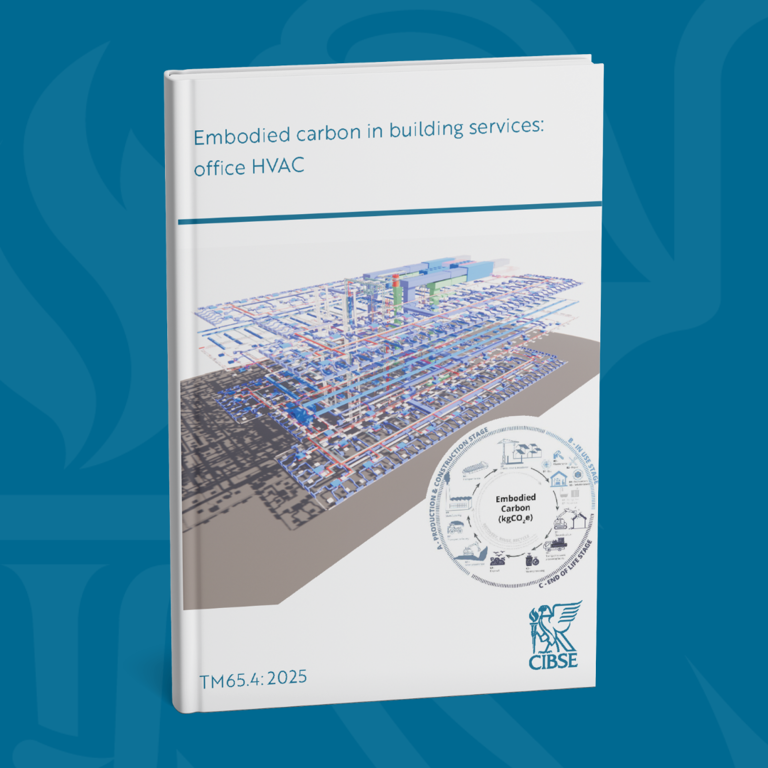CIBSE has published TM65.4: Embodied carbon in building services – Office HVAC, a new piece of guidance that provides vital insights into the life cycle embodied carbon impact of heating, ventilation, and cooling (HVAC) systems typically used in UK office buildings.
Developed by Introba and sponsored by CIBSE and Introba, the research investigates the embodied carbon of HVAC equipment and design strategies at both product and system levels, helping engineers, designers, and sustainability professionals make informed decisions that support net zero design goals. The publication draws on data shared by manufacturers and applies the CIBSE TM65 methodology to calculate embodied carbon impacts.
The study focuses on the embodied carbon of HVAC systems in a typical UK new-build five-storey office building, comparing two timeframes: a typical building service life (60 years) and a tenancy period (12 years). This approach highlights how design strategies influence carbon outcomes over time and supports decision-making at different stages of the building life cycle.
What you’ll learn from TM65.4
-
Gain a clearer understanding of how different HVAC choices affect embodied carbon.
-
Use the results at the early design stage to inform the selection of low-carbon systems.
-
Build on a consistent framework that aligns with the wider CIBSE TM65 series.
-
Support net zero office design through evidence-based decision-making.
TM65.4 represents an important first step towards understanding the embodied carbon implications of different HVAC design strategies in office environments. Where Environmental Product Declarations (EPDs) are not available, the results of this study can provide useful benchmarks at the early design stage. However, they should not replace project-specific calculations once a design becomes more detailed.
You can access the publication HERE

